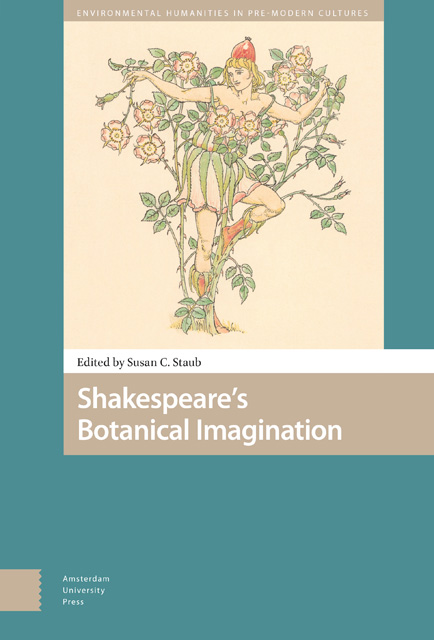8 - Clockwork Plants and Shakespeare’s Overlapping Notions of Time
Published online by Cambridge University Press: 17 October 2023
Summary
Abstract
This paper explores how the human body’s relationship to time often emerges as both mechanical and plant-like in the writings of an array of early modern authors. Starting with a sunflower clock theorized by Athanasius Kircher, I move into a discussion on how early modern time-sense relies on multiple forms of temporal experience, including the mechanical, the organic, and the environmental. Using Shakespeare as well as the work of horticultural writers, I explore how early modern notions of “keeping time” trouble Aristotelean divisions between organic forms, and how they suggest kinship between the vegetative and the human.
Keywords: Plant, garden, time, mechanical clock, mechanical watch, environment.
In the mid-1630s, Athanasius Kircher, the Jesuit inventor, astronomer, medical writer, and would-be translator of Egyptian hieroglyphics, created a device with such powerful implications that fellow scientists and theologians from across Europe, including Pierre Gassendi and Rene Descartes, discussed and debated it. Kircher claimed that, with the aid of a sunflower seed, he had created a perfect clock, one that used a theorized magnetic connection between plants and the sun to run a timepiece more accurate and more perpetual than either the era’s ubiquitous sundials or its increasingly available mechanical timepieces. This clock, as reported by early observers, ran without the benefit of direct sunlight, for instance in a darkened room. And unlike the “rank” and poisonous “midnight weeds” commonly believed to derive their power from the absence of the moon or sun, the sunflower clock promised to demonstrate a consistent solar influence, no less true and life-giving for being invisible. While Kircher could not, subsequently, show that his sunflower seed clock worked as promised, he continued to experiment, substituting a root balanced in water for the original seed during a demonstration in Rome, and later attaching an entire sunflower plant to a rotating disk. This final experiment, described in Kircher’s Magnes siue de arte magnetica (1641), includes a beautiful and detailed engraving of a sunflower in full bloom, growing through a cork disk floating on a pool of water [Figure 3].
- Type
- Chapter
- Information
- Shakespeare's Botanical Imagination , pp. 193 - 218Publisher: Amsterdam University PressPrint publication year: 2023



